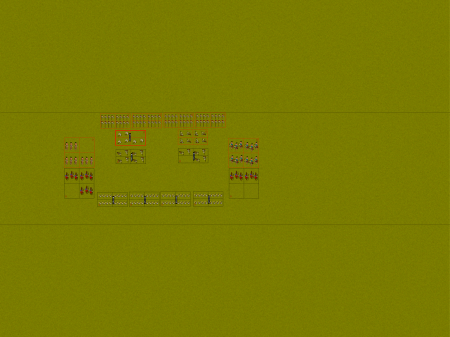This is my refight of Magnesia. It is the first battle where I used a DBA army list. I thought it would make the game run longer. It seems the game ended in 4 or possibly 5 game turns. I think it was actually 5 but I was interrupted in the middle of the fight and lost count. The whole battle took about 1 hour.
The battle opened with a general advance from the Seleucids. The catafracts advanced quickly while the rest of the line stayed together at the pace of the pike phalanx. The skirmishers managed 1 hit on a Roman velite. Rome responded with an ineffective missile barrage of their own. They refrained from contacting the catafracts but did attack the two thureophoroi and drove them steadily. Turn 2 saw both sides rolling a 1 for initiative and the Seleucids took the first move. The Galatian warband charged home on the Legionare but took a hit from the Pila. The melee was indecisive. Three of the phalanx and the elephant also charged home in the center to no real effect either. On the right, one of the Seeucid thureophori broke and ran after the melee and would be caught on turn three by the Pergememnid Thureophoi and dispatched. The cavalry battle swirled back and forth on both flanks. Also on turn 2, the elephants drive back the velites they were fighting, crashed into a Roman legionare who could not throw their pila as it was after melee. Turn 3 saw the elephants get hit and go berserk. The moved off to the right where there was a huge lane for them to run down and off the board. The Galatians lost the melee and fled. They would be caught on turn 4 from behind and dispatched. The remaining Seleucid thureophoroi was also surrounded and destroyed. This left the catafracts on the right.
On turn 4 the velites in the center would get a lucky hit and destroy the phalanx engaging it. The Roman infantry would make short work of its opponents including the flanked phalanx also in the center. The catafracts on the right would hold on to the end but on the left, they would succumb to a flank charge by the velites.

The end. Note that the Roman cavalry on the left fell just short. This is the end of turn 5 I think. The light infantry and catafracts just hold on. Amazingly, one of the phalanx suffered no casualties.
The battle went similar to the actual account. The Pergamemnid troops managed to push back the Seleucid left (the right side of the board) and the other flank remained in check until the end. The phalanx performed well until the supporting units started to fall apart. I am certain I screwed up the time line but this is roughly how the battle went. 😀
Cavalry on cavalry match-ups seem slow. I think it would be worth adding a die to each side to speed things along. That would give fully armored cavalry 3 dice to 2 dice for the half armored cavalry. As it was, they were rolling 2 dice to 1 die after the initial contact. The combat skills were all average but I suppose giving some units superior would also compensate instead.
Finally, elephants felt a little under powered. My solution is to make them attack at 3D against infantry and 4D against cavalry. For defense, they always count as having more armor than their opponents.





 Posted by acarhj
Posted by acarhj 



